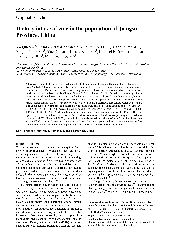摘要
Objectives: To evaluate dietary zinc and other divalent minerals intake among the population of Jiangsu Province. Methods: 3,867 subjects aged 4-89 years were representatively sampled in two urban and six rural areas of Jiangsu Province. Dietary intake was assessed using 24-hour recalls on three consecutive days. Insufficient zinc intake was calculated based on the Chinese Dietary Reference Intakes. Results: Overall, the percentage of subjects with insufficient intake of zinc was 22.9%, with a declining trend with age. Except for the group >= 50 years, mean zinc intake of all other groups were below the age- and sex- specific Recommended Nutrition Intakes (RNI). Approximately 2/3rds of the subjects <= 17 years of age had insufficient zinc intakes. Compared with the age group below 11 years, risk of insufficient zinc intake increased in the adolescents aged 11-17 years (OR: 2.10, 95% CI: 1.86-2.36), but decreased in adults aged 18-49 years and >= 50 years (OR: 0.76, 95% Cl: 0.66-0.8; OR:0.55, 95%CI: 0.47-0.64). Mean intake of iron, copper, magnesium and selenium met the Chinese DRIs respectively, except for selenium in females. The prevalence of insufficient intake of copper, magnesium and selenium was 37.2%, 22.8% and 29.3%, respectively, while the overall prevalence of insufficient iron intake was only 3.4%. Conclusion: Dietary zinc intake of the Jiangsu Province population does not generally meet the Chinese RNI. Children and adolescents in particular have a higher risk of insufficient zinc intake.
- 出版日期2009
- 单位江苏省疾病预防控制中心
